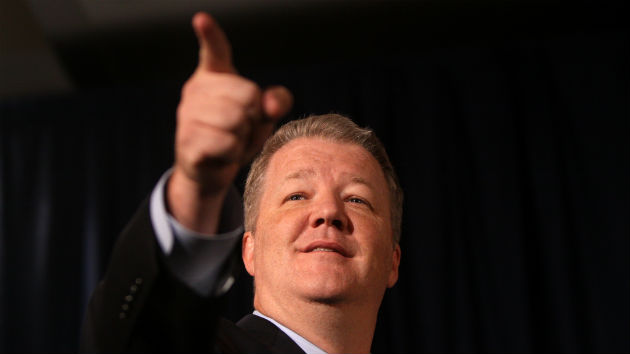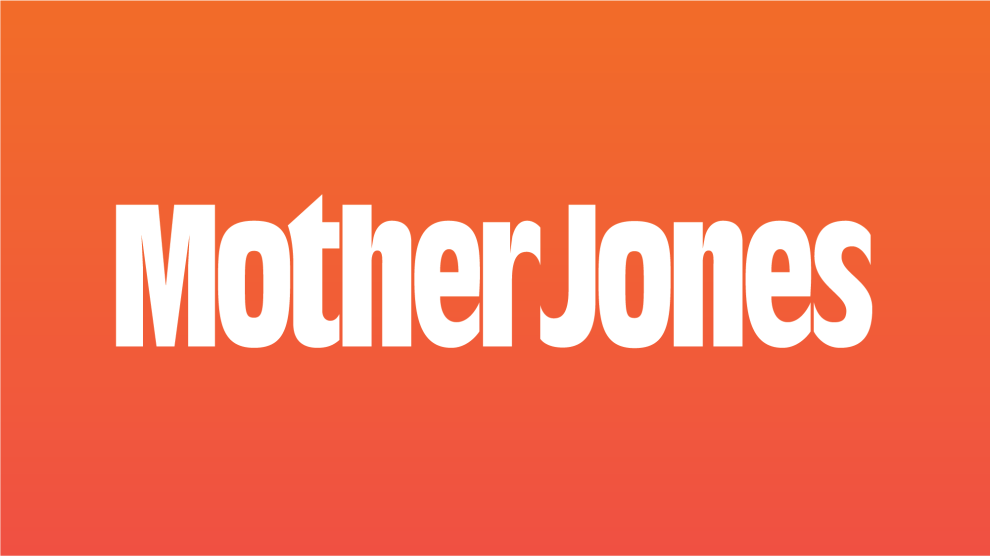
RadomanDurkovic/Thinkstock; irayoflight/Thinkstock
“It’s eerie how much 2014 is like four years ago,” says Craig Hughes, a Denver-based political consultant who ran Democrat Michael Bennet’s successful 2010 Senate campaign. It’s just after 10 a.m., and we’re sitting in a coffee shop called Paris on the Platte. Hughes recounts how, back in 2010, all but one of the final 18 public polls conducted before Election Day showed Bennet losing. In recent weeks, Democratic Sen. Mark Udall has trailed Republican Rep. Cory Gardner in 11 of 12 polls. In 2010, pundits said that Bennet’s campaign ran too many pro-choice advertisements; political commentators these days deride Udall as “Mark Uterus” because his campaign has relentlessly focused on reproductive rights and women’s health. And Udall’s campaign is betting, like Bennet’s 2010 effort did, on the changing composition of the Colorado electorate. Also, just like four years ago, Colorado Gov. John Hickenlooper, who is seeking a second term, is facing a strongly conservative challenger, and in the state Legislature, Colorado Democrats are fighting to protect their majorities in both chambers.
So if there are so many parallels, do Democrats in Colorado have reason to believe they can again buck the political tide?
In 2010, the last nonpresidential election year, Republicans across the country shellacked the Democrats. They won the US House of Representatives, elected 12 new Republican governors, and achieved majorities in 22 state legislative chambers. When all the results were in, the GOP held 3,941 state legislative seats nationwide, the most since after the 1928 elections. But that Republican wave did not hit Colorado. In the Centennial State, voters elected a Democratic US senator and a Democratic governor. The party easily retained its majority in the state Senate. The Democrats did lose control of the state House, but by just one seat in a race decided by a few hundred votes. (The Democrats took back the House two years later, when Obama’s reelection campaign turned out more Democratic-leaning voters.)
From afar, it looked like a political miracle. Not exactly. Starting in the early 2000s, progressives and Democrats in Colorado built what was arguably the most sophisticated political machine in the country, which included assorted groups operating year-round that were financed (anonymously, in part) by labor unions, environmental organizations, pro-choice groups, trial lawyers, and wealthy individuals. For years, the Colorado Machine flew under the radar, just as its leaders preferred, and capitalized on the state’s changing demographics. It helped Democrats go from perennial losers to establishing one-party control. And in 2010, the Colorado Machine minimized losses and ensured that Democrats weren’t swept out of power.
As difficult as the machine’s task was in 2010, this year presents its toughest test yet. Udall is locked in one of the country’s closest Senate races. Hickenlooper has looked surprisingly vulnerable against Republican Bob Beauprez. Democratic candidates have lagged in the races for attorney general and secretary of state, and the party currently clings to a one-seat majority in the state Senate that Republicans believe they can erase.
And this time, Republicans know all too well what they’re up against. (It helps that a former GOP state legislator cowrote the definitive book on the Colorado Machine.) Colorado Republicans say they are catching up to the Democrats—by mimicking the other side’s work and building their own independent-spending operation. They know that if they cannot make gains in this GOP-friendly year they may well be doomed to the minority for a long time. As Dick Wadhams, a former chair of the Colorado Republican Party, told the New York Times, “This election, in many ways, is going to determine whether Colorado has really shifted blue.”
THE STORY OF THE RISE of the Colorado Machine starts in the late 1990s. Republicans controlled the Colorado General Assembly, the governor’s office, both US Senate seats, and four of the state’s six congressional districts. Conservatives led the charge to amend the state constitution to include a Taxpayer Bill of Rights that made it nearly impossible to raise taxes, and called for displaying the Ten Commandments in public schools. None of this was surprising, given that Colorado was the home of anti-immigrant crusader Rep. Tom Tancredo and James Dobson’s Focus on the Family, a social-conservative powerhouse at the time.
Colorado Democrats, meanwhile, had been stuck in the state Legislature’s minority almost nonstop since Watergate. Each year, like clockwork, progressive measures were introduced in the Legislature and then spiked. The Democrats and their allies were left to spend the rest of the legislature’s four-month session diluting, deflecting, and killing harmful bills. Finally, the Democrats and progressives realized that a strategic shift was necessary—and that they had to engineer it. “We wanted to be sitting at the table, not eaten at the table,” says Lynne Mason, the former political director of the Colorado Education Association (CEA), the state teachers’ union.
Over several years, the leaders of Colorado’s biggest left-leaning organizations, a handful of superwealthy donors, and several savvy political operatives joined forces to craft a plan. The organizations included the CEA, the state trial lawyers association, the AFL-CIO, the SEIU, and the pro-choice group NARAL. The big donors—medical-device heiress Pat Stryker, software guru Tim Gill, tech entrepreneur (and future congressman) Jared Polis, and businessman Rutt Bridges—came to be known as the Gang of Four or the Four Horsemen. Together, these players did what liberals in many other states could not: They sat around the same table, checked their respective agendas at the door, and pooled their resources to fund a plan to win elections and change the direction of their state.
This effort, they agreed, would take place outside of the Democratic Party and the traditional campaign finance restrictions. No new group would have “Democratic” in its name. At the time, registered Republicans, registered Democrats, and unaffiliated voters each comprised roughly a third of the electorate. Winning over those independents would be easier without a clear tie to a political party.
These operatives and funders set an initial goal: Win back the state Senate in 2004. They poured millions of dollars into radio ads, cable spots, and canvassing. They deployed innocuously named groups with no direct connection to the Democratic Party, such as Alliance for Colorado’s Families, Forward Colorado, and Coalition for a Better Colorado. In the fall of 2004, they realized they could also make a play for the state House for an additional modest investment. The gamble paid off. Democrats seized both chambers for the first time since 1974.
Riding high after the 2004 victory, the donors and institutional players met to figure out how to sustain their operation. They had cobbled together a political operation to flip control of the Legislature, but could they now figure out how to not only keep the machine running but grow it? The Gang of Four didn’t last much longer. Polis turned his attention to his own political career, and Bridges later moved on to other pursuits. But Gill and Stryker were on board and soon were joined by new donors, and these funders formed the Colorado Democracy Alliance, an exclusive state-level donor club for investing in the Colorado Machine. The donors and their advisers auditioned various groups, hand-picked those to support, and demanded tangible results (read: electoral victories). “It’s the donor table as political venture-capital fund,” says Rob Witwer, the Republican former state legislator who cowrote The Blueprint: How the Democrats Won Colorado—and Why Republicans Everywhere Should Care.
What began as a small collaborative effort grew into an innovative, highly organized, data-driven operation. The Colorado Machine produced state-level versions of national groups—Colorado Media Matters, for instance, or Colorado Ethics Watch (modeled after Citizens for Responsibility and Ethics in Washington, DC). It also gave birth to new entities like ProgressNow, a lefty communications shop that has since gone national with chapters in 21 states. (It created the “Brosurance” keg stand ad to promote Obamacare.) The Colorado Machine grew larger and more sophisticated in the mid-2000s. The names of the individual groups within the machine changed every cycle—a tactic intended to throw off anyone trying to connect the dots.
And it all worked. In 2006, the Democrats elected Bill Ritter as the new governor and defended their majorities in the Legislature, making Colorado an all-blue state for the first time in generations. Two years later, then-Sen. Barack Obama triumphantly accepted the Democratic nomination in Denver and went on to trounce Republican Sen. John McCain (R-Ariz.) by 9 points in the state.
The success wasn’t just due to wealthy folks throwing money at politics, Witwer says. What made the project work was its laserlike focus on collaboration aimed at one thing: winning races. “The brilliance of the Colorado Democracy Alliance model wasn’t just recruiting rich people,” he says. “It was coordinating that money…On the Republican side, donors tended to work independently and sometimes even at odds with one another.”
Come 2010, the Colorado Machine helped Democrats staunch their losses in a historically bad year for the party. But the machine also quietly played a role in knocking off the GOP’s top pick for governor, ex-Rep. Scott McInnis, using sophisticated plagiarism software to comb through McInnis’ personal papers, according to a source with direct knowledge of the project. And the machine’s researchers hit pay dirt: McInnis had copied passages about water rights from the work of a sitting Supreme Court justice. “It was like Christmas in July and Santa wore shorts,” the source says. The plagiarism allegations, which first appeared in the Denver Post, torpedoed McInnis’ candidacy. Dan Maes, a more hardline Republican, won the nomination and went on to lose to Hickenlooper.
Colorado Machine operatives boast that their work has reshaped the politics in a swing state, where registered Republican voters outnumber Democratic voters by nearly 145,000. But changing demographics and national trends also paved the way for the Democrats’ triumphs. Rick Ridder, a political consultant who works for Polis, notes that a Democratic wave year in 2006 and massive campaigns organized by Obama in 2008 and 2012 were crucial to the Democrats’ successes in those years. All the while, the influx of Latino and young voters, he adds, has turned a once-red state purple and given the Democrats a fighting chance. “The Colorado model,” Ridder says, “is the surfboard on top of the demographic wave.”
LAST WEDNESDAY NIGHT, the Centennial Ballroom at the Denver Hyatt echoed with chatter and laughter. Then the room went dark and the exposure of the Colorado Machine’s deep secrets began. Or sort of.
What had drawn the crowd of Republican activists, operatives, and state lawmakers was an exclusive screening of Rocky Mountain Heist, the latest documentary by Citizens United, the conservative outfit perhaps best known for bringing the suit that led to the Supreme Court decision expanding the role of outside money in elections. Rocky Mountain Heist purportedly reveals the grand liberal conspiracy to hijack the great state of Colorado. Narrated by conservative blogger Michelle Malkin, the film depicts a shadowy cabal of plutocrats—that would be Gill, Stryker, Polis, and Bridges—who plotted in secret and used their wealth to buy state elections and turn Colorado into a left-wing laboratory overrun with gun-grabbers and stoners. “It started with a plan to control the state Legislature,” Malkin says over dramatic music, “and helped pave the way to White House.” The movie ends with a dire warning about the “Colorado Model” coming to a state near you. Onscreen, a blue blob spreads outward from Colorado to cover the entire country.
Despite the hyperbolic warning, the filmmakers left an obvious question unexplored: Why doesn’t the right imitate the Colorado Machine? After all, the movie tells the story of how a party went from nearly obsolete to dominant in just 10 years.
But a small group of Colorado Republicans claims to be embracing the Colorado model for its own ends—building a political machine that can compete with the left. Late August saw the launch of CORE, the Colorado Republican Party’s own independent spending operation. Like the progressives in the beginning, CORE is starting out with a modest initial goal of ousting seven Democratic state senators in order to flip the upper chamber. This new outfit plans to marshal $10-12 million in the 2014 elections. “CORE will help counteract the influence of radical special interest groups and labor unions by helping support more cohesive statewide campaign efforts and will persuasively contact voters in key legislative districts,” says state GOP chairman Ryan Call.
Conservatives in Colorado have also created their own echo chambers with a political gossip site, Colorado Peak Politics, a localized version of the Drudge Report called Complete Colorado, and a site devoted to tracking and attacking Democratic candidates called Revealing Politics. All of these outlets live to trash Democrats, to dig up unflattering audio and video of Dems, and to get their messages picked up by the lone major newspaper in the state, the Denver Post.
No one can say for certain if the Colorado GOP’s efforts to play catchup are just talk or real at this point. Witwer, the legislator-turned-author, says he believes his party has finally seen the light. “There is a sense within the party that the GOP is closing the gap,” he insists. Various leaders on the left scoffed at this, pointing out that they have seen and heard little on the ground from their opponents. “I’ve heard Rob saying for the last five years that the Republicans here are getting their act together,” says Pete Maysmith, the executive director of Conservation Colorado, the state’s biggest environmental group, which will spend nearly $1 million on state races this year.
Even if Republicans don’t get their act together in 2014, the Democrats on the ballot—especially Mark Udall—face a daunting challenge. Despite recent election results, Colorado’s voter rolls are still more Republican than Democratic. “A lot of people in DC or wherever think that Colorado is now blue,” says Lynne Mason of the CEA. “It’s not; it’s still a big swing state.”
To have a chance next week, Udall’s campaign must mobilize voters at an unprecedented level and, as Bennet did in 2010, win big among unaffiliated women, Latinos, and young people. The early voting numbers have, not unexpectedly, been bleak for Udall. Republicans have out-voted Democrats by a 10 percent margin as of Sunday. Still, Craig Hughes, the Denver-based consultant, told me he remains confident in the grassroots operation built by Udall and the Democrats—the 25 field offices, 100-plus field organizers, and more than 4,000 active volunteers. Yet he was far from cheery. For all the parallels to the 2010 race, Udall’s opponent, Cory Gardner, is a far stronger candidate than Bennet’s foe was, and an increasingly polarized electorate means Udall’s turnout operation must exceed Bennet’s 2010 effort. “There’s a hill to climb,” Hughes says, “and if the Democrats don’t climb it, they’ll lose.”













